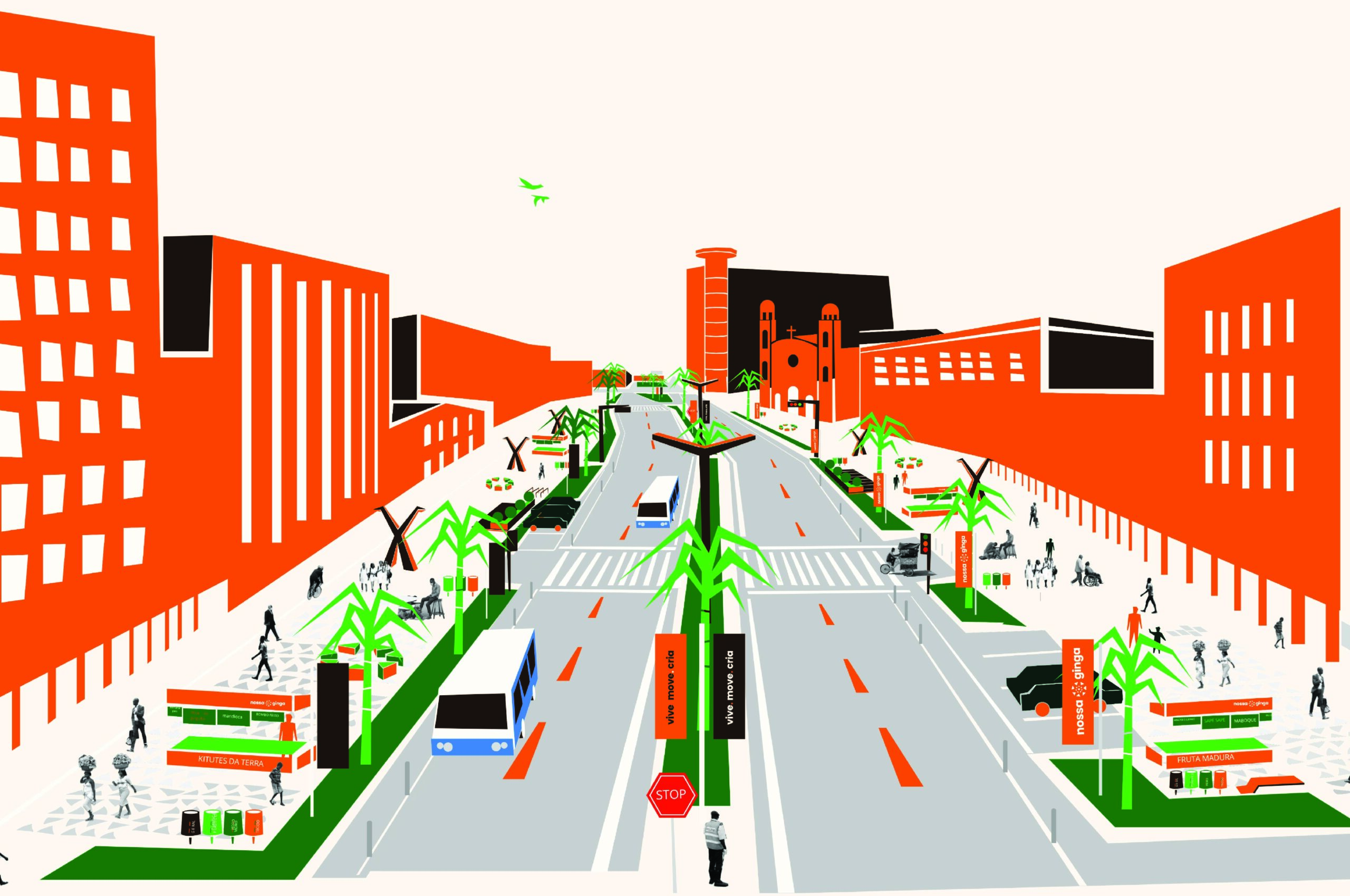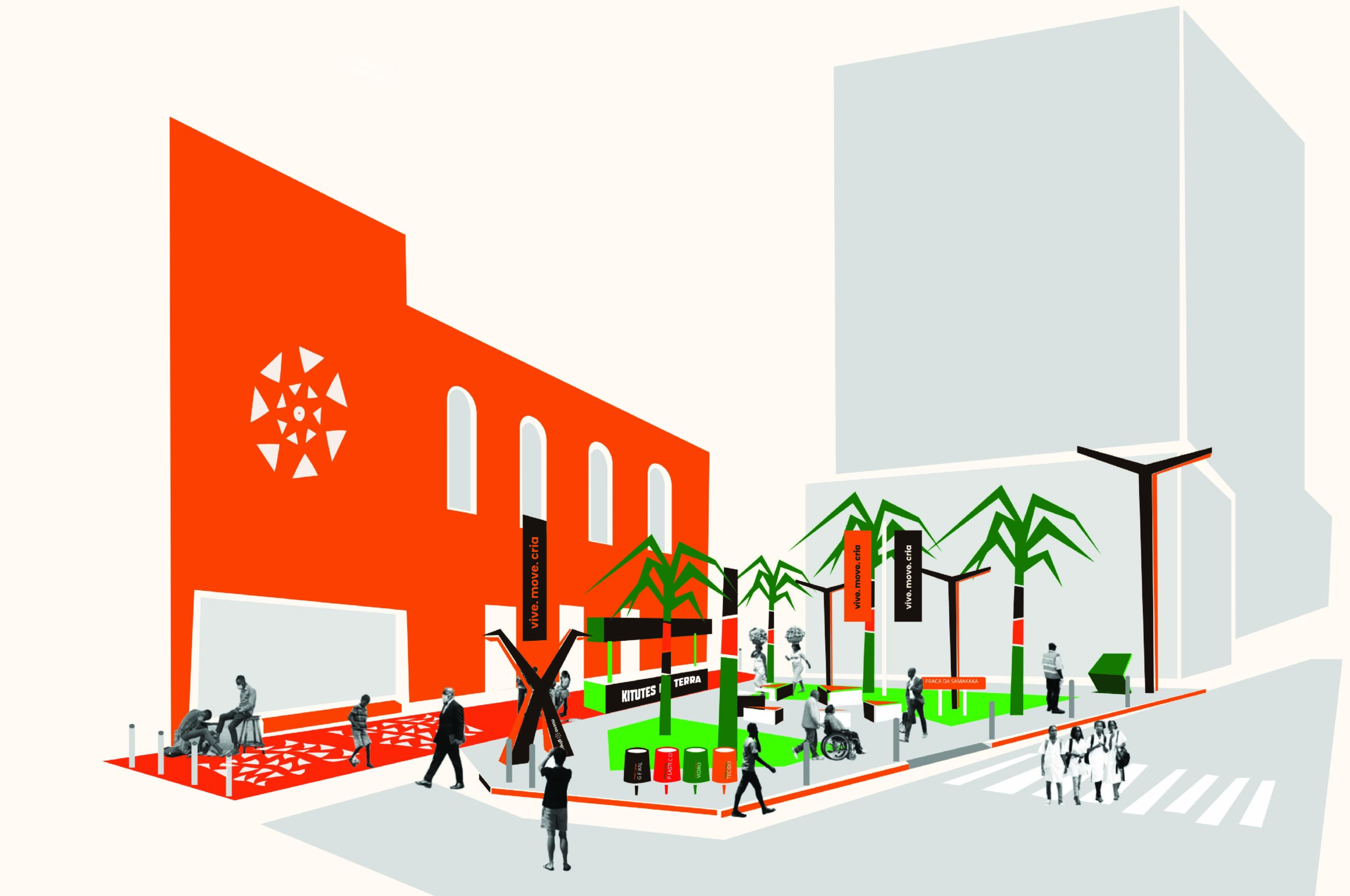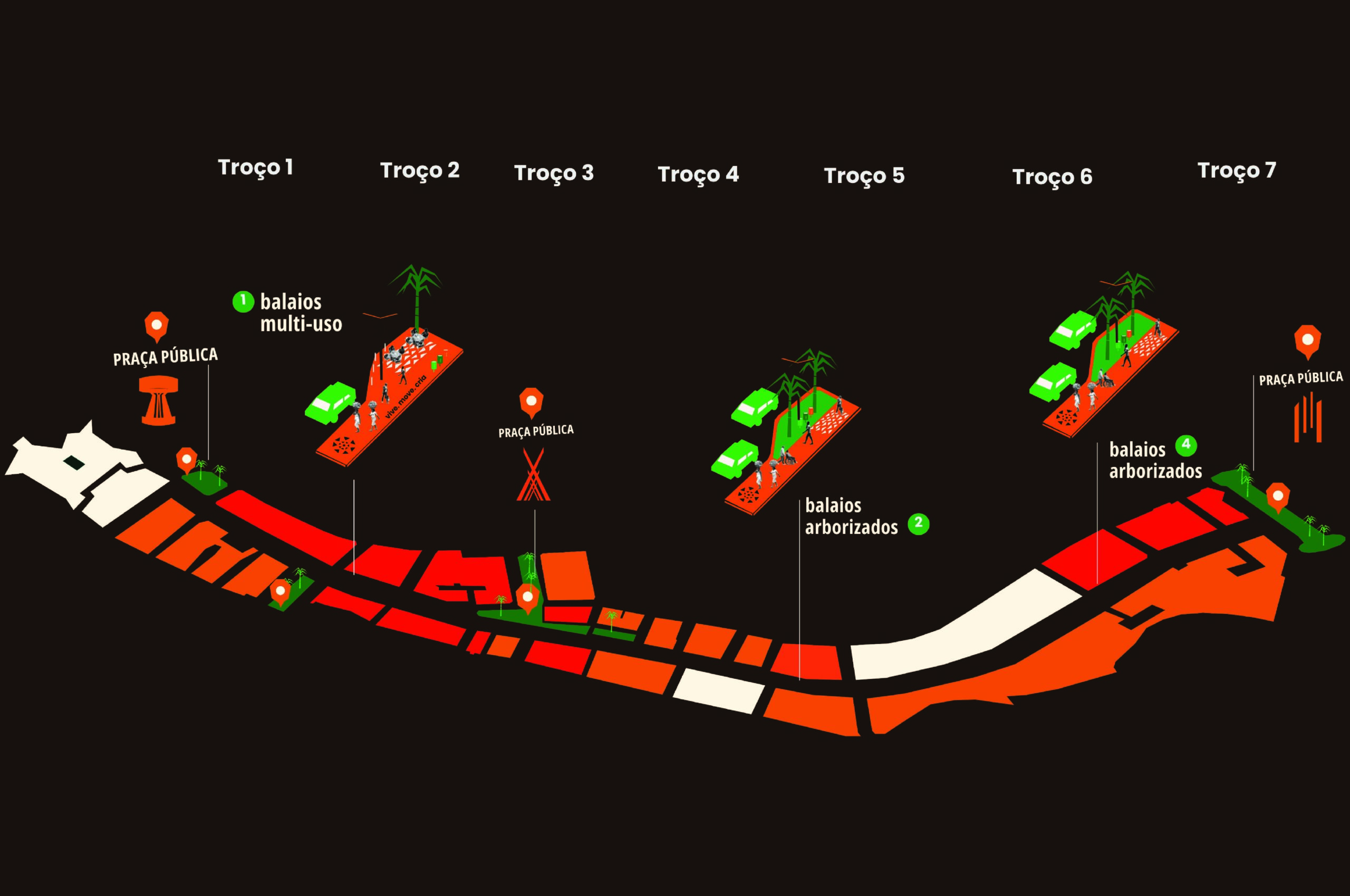Project implementation: Angola
Project development: Angola
Introduction
The city of Luanda, capital of Angola, carries within itself a cultural and historical heritage that positions it as one of the main urban landmarks on the African continent. However, as in many other Latin American and African cities, the process of urban expansion and decentralization has led to the progressive abandonment of its historic core. Rua Rainha Ginga, formerly known as Rua Salvador Correia and Avenida dos Restauradores, is one such space that represents both Luanda's cultural richness and the challenges of its contemporary governance.
Doladob, an architecture, urban planning, and project management firm, has taken an active role in the development and implementation of sociocultural activation and innovation projects. With renowned projects such as Axi Luanda and Naxixi Street, the company has established itself as a creative and transformative platform. This experience led to the proposal for the rehabilitation and reactivation of Rua Rainha Ginga, with a special focus on Praça da Samakaka, considered the model section of the intervention.
The central objective is to transform this vital hub of Luanda into a space that unites identity, innovation, sustainability, and inclusion. The goal is to reverse urban degradation through architectural and urban solutions that empower the local community, improve the quality of life of residents, workers, and visitors, and create new economic, social, and cultural opportunities.
Historical and social context
Rua Rainha Ginga is more than just a thoroughfare. It's the main artery that historically connected the city's administrative center to the downtown commercial district. Today, despite its deteriorating condition, it remains a space of great social, economic, and cultural importance.
In everyday life, the street welcomes street vendors, newspaper vendors, shoe shiners, formal and informal traders, students, businesspeople, public servants, and residents. It is, therefore, a plural space, where different social groups coexist. Despite this diversity, the predominant relationship between them has been solely financial, which limits the creation of a common identity and the exchange of knowledge and experiences.
Deteriorating infrastructure, poor tree cover and lighting, the concentration of waste, and unplanned roads have contributed to social exclusion and the loss of vitality in the area. Even so, relatively stable security, a rich history, public squares, and a strong youth presence are positive factors that open up space for innovative interventions.
First pilots and tests
Before moving to a larger scale, Doladob implemented a pilot subproject on Rua Rainha Ginga. This initial experiment consisted of installing new, stylish counters for the sale of local produce and reorganizing the street vendors.
Intervention proposal
Mobility and sustainability
The intervention aims to transform Rua Rainha Ginga into an example of sustainable mobility. The city needs more pedestrian traffic to stimulate local commerce, increase social interaction, and reduce the negative impacts of road transport. Closing certain streets for pedestrianization is a fundamental step in this process.
Conclusion
The rehabilitation of Rua Rainha Ginga, with an initial focus on Praça da Samakaka, is more than an architectural or urban planning project. It's a movement of social, cultural, and economic transformation for Luanda.
By combining historical identity, urban innovation, and sustainability, the project aims not only to revitalize the physical space, but also to generate new forms of social interaction, economic inclusion, and cultural appreciation.
It is a proposal that balances risks and opportunities, aware of the complexity of the territory, but firm in the conviction that cities can only prosper when their public spaces are designed for people and by the community.
Investing in Rua Rainha Ginga is investing in the future of Luanda: a future of sustainable mobility, social integration, cultural creativity, and economic development.




